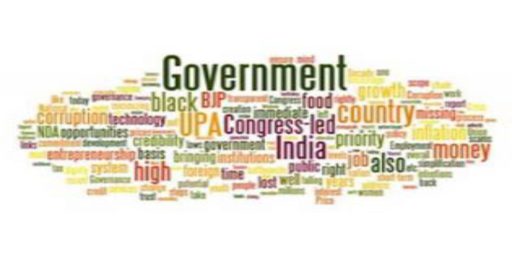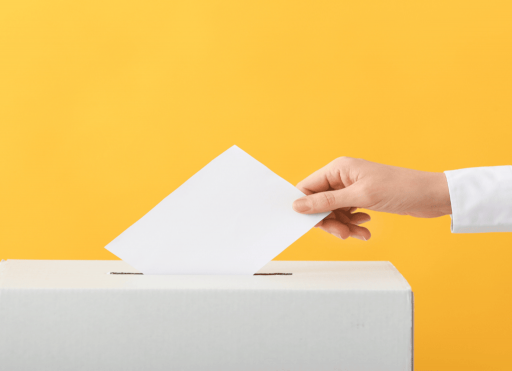September Activity – My Local Government
Expected Outcomes
- Students will be made aware of the concept of local government.
- Students will be able to understand two types of local government for rural and urban areas.
- Students will get an overview of work done by local government in their area.
- Students will comprehend the functions of the local government.
Sessions’ overview
| S.No | Activity process | Time taken |
| Period 1. | Introduction
Roleplay Activity Teachers kindly follow guided steps 1, 2 and 3 *Note: The teacher can plan for the characters of the role play and give students the script to practice in advance in order to complete the activity smoothly within the given time. |
45 min |
| Period 2. | Research Activity
Teachers kindly refer to steps 4, 5 and 6 |
45 min |
Steps for the Activity
Period 1
Time required - 45 Minutes
Step.1 Situation 1
Step.2 Situation 2 (Roleplay)
Step.3 Plan for the next class
Step 1: The teacher is requested to tell the students about the below-mentioned situation and initiate an open a discussion.
Imagine your home where everyone has a role to play managing one or the other task. The father goes to work, mother takes care of the house and cooks food, and granny looks after the kids.
- What if no one has a division of work or no divided roles?
- What will happen if they do not do their jobs?
Step 2: Once the discussion is opened to the students and they look engaged enough, the teacher can take their attention to their villages. Teacher can conclude by saying that the family works as a unit to take care of everything. Thereafter, she can put forward the second situation.
For our villages also, we have the local government working in many roles like cleaning our garbage, collecting house tax, maintaining streetlights, etc.
Advantages of local government are:
(1) Citizens can directly go to the local government and resolve issues with minimum cost.
(2) Perform their functions regarding improvement of the local area.
(3) Local knowledge and local interest are important ingredients for democratic decision-making.
(If the local area is improved then the state is improved and when the state is improved, the country is improved. So in this regard, local government is important.)
Later the teacher, will talk about role play and ask 5-6 students who can volunteer to act in the play.
(Refer Print section for a Printable copy)
Role Play
Character list
Villager 1: Ramu
Villager 2: Ganpat
Villager 3: Meena Aunty
Villager 4: Raghav
Optional- 2-3 animal props/students to hold props or act like them.
The situation for role play: There is a garbage dump in the village which stinks and gives out a foul smell. Many birds, dogs, and cows eat the plastic waste and die in the village causing additional trouble for the villagers. The village people take care of their own garbage but the people passing by the village throw garbage bags when they travel to work. As a result there is a garbage dump that the village panchayat needs to pay attention to.
Let us begin,
(Ramu and Ganpat are standing at the village Bus stop)
Ramu: I do not like coming to the village bus stop!
Ganpat: Yeah, me too! It stinks bad here! Look at all the garbage that is dumped here.
(Meena aunty is seen dumping some more garbage)
Ramu: Hey! Meena aunty why are you adding to the garbage here!
Meena: Today I did a lot of cleaning, just got my house spic-n-span. But by the time I was finished with my cleaning, the garbage Gadi (vehicle) had left for the day. How can I keep so much waste at my house for an entire day? It will give a foul smell. So I thought of dumping it here. Everyone in the village does it!
(Meanwhile, people passing by the village are also throwing garbage, and stray animals are eating plastic and waste. Ramu tries to move them away)
Ganpat: Looks like this problem is getting worst by the day.
Ramu: What should we do?
Raghav: Ram! Ram! Namaskar! I am Raghav of the neighbouring village. In our village, all these problems are taken care of by the panchayat. That is why our village is quite clean. You can also take the help of your Panchayat.
Ramu: Is that so?!
Everyone: Let us go to the panchayat!
-Play ends-
Once the students are done with the role-play in front of the class, the teacher can ask the students a few probing questions. E.g.:
- Do you think that people did right or wrong to tell the panchayat?
- Do you think their issue will be resolved by the panchayat?
- Could these people solve the garbage issues of their village on their own?
Step 3: Plan for the next class. When the discussion ends, the teacher shall divide the students into groups (6 in a group). Form groups of students who belong to the same panchayat or municipality and ask them to research their topic (panchayat/municipality) and come prepared for the next class.
Students who belong to the Municipality:
- What is the name of the Municipal Corporation of your city?
- Who is the mayor of your city?
- Who is the Local Corporator of your ward?
- Term of the election?
- When was the last election conducted?
- What are the main functions of your Municipal Corporation?
- Findout high priority issues in your locality related to the local government (max three).
- Explore the website/ web portal of your local government and do as mentioned below:
- List out the main features of the web portal.
- Try to file an online complaint on anyone of the issues you mentioned above.
- Share your experiences/challenges about the whole process in your presentation.
Students belonging to Village Panchayat:
- What is the name of the Gram Panchayat of your village?
- Who is the Sarpanch of your Gram Panchayat?
- Who are the other panchayat members of your village?
- Term of the election?
- When was the last election conducted?
- What are the main functions of your Gram Panchayat?
- Find out high priority issues in your locality related to the local government (max three).
- Explore the website/ web portal of your local government and do as mentioned below:
- List out the main features of the web portal.
- Try to file an online complaint on anyone of the issues you mentioned above.
- Share your experiences/challenges about the whole process in your presentation.
Ask students to prepare a one page note/chart/presentation of their research work and come prepared for the next class.
Period 2
Time required - 45 Minutes
Step 4- Be ready with research work, select 1 representative to present
Step 5- Presentations
Step 6- Summarise
Step 4- When the groups are set, ask them to be ready with their presentations and select a representative.
Step 5- One representative of each group can come forward and present the points discussed in the group.
Step 6- The teacher will summarise the topic and list down some functions of the local government. A few examples are given below:
- Collection of house tax
- Issue of birth certificates, death certificates
- Malaria issues in the village
- Garbage is thrown around on roads in the village
- Streetlights not working in the village
- Vehicles parked on the road
- Regularly conduct Gram Sabha meetings
- Health and hygiene maintenance
Annexure
Know more about your Local Government through the table given below:
LOCAL GOVERNMENT
| S. No. | PANCHAYAT | MUNICIPALITY |
| A | Under Article 243(d) of the Indian Constitution, ‘panchayat’ has been defined as an institution of self-government in rural areas. | The municipality has been defined in Article 243P as an institution of self-government in an urban area, constituted under Article 243Q. |
| B | The constitution Article 243B provides for the establishment of a three-tier Panchayati system:
|
The Constitution Article 243Q provides for the rules regarding the constitution of municipalities. According to it, three types of municipalities are created:
|
| C | All the members of the three levels in the panchayat hierarchy are elected by the eligible voters living in the area. | Most of the members of municipalities are elected, while there may be some who are nominated for their unique knowledge and expertise. |
| D | Some major functions of a panchayat are as follows:
|
The main functions of a municipality include:
|
| E | Every Gram Panchayat shall continue for a term of five years from the date appointed for its first meeting and no longer. | The tenure of Municipality is five years. |
| F | The Panchayat leader is named Sarpanch in Hindi, and each of the five members is a Gram Panchayat Sadasya or Panch. | The mayor is the head of the municipal corporation, but in most states and territories of India, the role is largely ceremonial as executive powers are vested in the Municipal Commissioner. |
Reference Links:
11896058_1651588095086395_5560905796918988334_n.jpg (700×415) (india.com)
https://blog.ipleaders.in/panchayat-muncipality-society/
https://byjus.com/questions/what-is-the-difference-between-municipal-corporation-and-municipality/
Municipal corporation – https://in.worldorgs.com/catalog/margao/police-department/margo-municipal-council
Gram Panchayat – https://vpchicalim.in
Municipal council (India) - Wikipedia







